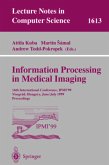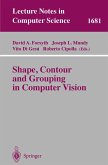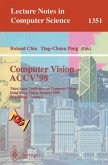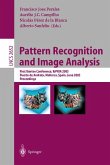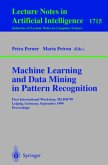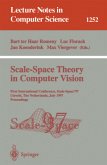The problem of range and motion segmentation is of major importance in computer vision, image procession, and intelligent robotics. This edited volume explores several issues relating to parametric segmentation including robust operations, model selection criteria and automatic model selection, and 2D and 3D scene segmentation. Emphasis is placed on robust model selection with techniques such as robust Mallows Cp, least K-th order statistical model fitting (LKS), and robust regression receiving much attention. With contributions from leading researchers, this book is a valuable resource for researchers and graduate students working in computer vision, pattern recognition, image processing, and robotics.
The primary focus of this book is on techniques for segmentation of visual data. By "visual data," we mean data derived from a single image or from a sequence of images. By "segmentation" we mean breaking the visual data into meaningful parts or segments. However, in general, we do not mean "any old data": but data fundamental to the operation of robotic devices such as the range to and motion of objects in a scene. Having said that, much of what is covered in this book is far more general: The above merely describes our driving interests. The central emphasis of this book is that segmentation involves model fitting. We believe this to be true either implicitly (as a conscious or sub conscious guiding principle of those who develop various approaches) or explicitly. What makes model-fitting in computer vision especially hard? There are a number of factors involved in answering this question. The amount of data involved is very large. The number of segments and types (models) are not known in advance (and can sometimes rapidly change over time). The sensors we have involve the introduction of noise. Usually, we require fast ("real-time" or near real-time) computation of solutions independent of any human intervention/supervision. Chapter 1 summarizes many of the attempts of computer vision researchers to solve the problem of segmenta tion in these difficult circumstances.
The primary focus of this book is on techniques for segmentation of visual data. By "visual data," we mean data derived from a single image or from a sequence of images. By "segmentation" we mean breaking the visual data into meaningful parts or segments. However, in general, we do not mean "any old data": but data fundamental to the operation of robotic devices such as the range to and motion of objects in a scene. Having said that, much of what is covered in this book is far more general: The above merely describes our driving interests. The central emphasis of this book is that segmentation involves model fitting. We believe this to be true either implicitly (as a conscious or sub conscious guiding principle of those who develop various approaches) or explicitly. What makes model-fitting in computer vision especially hard? There are a number of factors involved in answering this question. The amount of data involved is very large. The number of segments and types (models) are not known in advance (and can sometimes rapidly change over time). The sensors we have involve the introduction of noise. Usually, we require fast ("real-time" or near real-time) computation of solutions independent of any human intervention/supervision. Chapter 1 summarizes many of the attempts of computer vision researchers to solve the problem of segmenta tion in these difficult circumstances.




